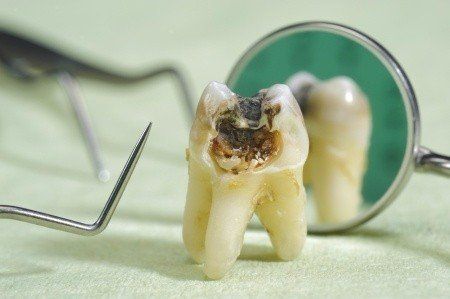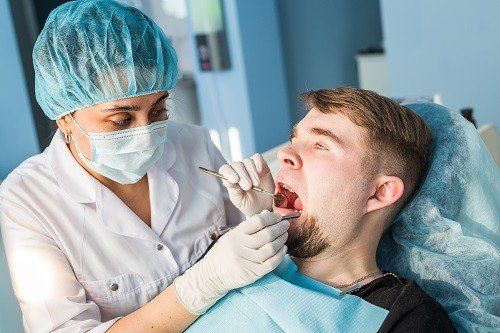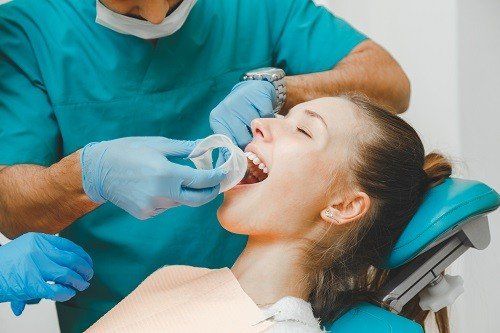How Fluoride Helps Adults at Risk for Tooth Decay
Just as children benefit from daily doses of fluoride, so do
the adults for its importance toward fighting tooth decay. While everyone
should be using fluoride toothpaste each day, there are some adults who would
benefit from even more fluoride in their lives, especially if they have a
higher risk for tooth decay. So, the question remains: which adults are at
greater risk? Some of the factors below may help you find an answer.
Dry Mouth
If adults find themselves suffering from dry mouth, there are at greater risk for developing tooth decay since saliva flow washes away the food debris that feeds decay-causing bacteria. Dry mouth can be a side effect of medicine, such as antihistamines or those for anxiety, high blood pressure, and allergies. Notable diseases, such as diabetes and Sjögren's syndrome, can also cause dry mouth.
To protect your teeth against the effects of dry mouth, you can try fluoride mouthwash, which can help moisten the mouth and thereby protect teeth. You can also can try saliva substitutes or chewing sugar-free gum (that contains xylitol) to increase saliva flow.
Receding Gums
As you hit adulthood, it’s possible you already have some form of gum disease, which can cause the gums to recede, exposing more of the teeth and giving bacteria more space. This can increase your risk of developing cavities under the enamel in your teeth’s roots. For protecting the roots of your teeth, a dentist can brush them with a fluoride gel or varnish. Prescribed fluoride gel or fluoride mouthwash can also get you more fluoride for protecting your exposed teeth.
Recent Filling
If you’ve had serious enough tooth decay that required a filling, you are still at risk for further decay. The bacteria and the other conditions within your mouth that lead to the filling may still be present. Because of this continued risk, you should remain vigilant in your fluoride use as part of your daily oral healthcare routine.
Crowns or Bridges
Even a crowned tooth is not safe from tooth decay. If there is natural tooth left, it remains at risk. The ends of a crown or filling could hide decay-causing bacteria, but enough fluoride could protect that tooth from decay. With some cases, the decaying process could stop altogether, thereby allowing the tooth to remineralize.
Dental Braces
Permanent braces can make it hard to help all areas in the mouth clean, and food can easily get lodged and create plaque, leading to cavities. So, a daily fluoride gel or rinse can add protections for your teeth against an increased risk of tooth decay.
Radiation Therapy to the Neck or Head
Adults who receive this kind of therapy have a much higher risk of developing tooth decay because radiation can damage a person’s salivary glands. As a result, dry mouth may develop. If this happens, copious quantities of fluoride are necessary for preventing any decay. Dentists can actually make a customized fluoride gel tray—just place the tray over each row of teeth for about five minutes a piece every day. Do not rinse out your mouth for about 30 minutes after this treatment. Visiting the dentist every 2 or 3 months is also optimal.
If you see tooth decay, it is time to visit your dentist! If you are tired of paying those high bills, consider using our New Hampshire discount dental care plan that can save you as much as 20 percent off your bill. For more information on our individual, family, and business plans, click here.
Copyright: filmfoto
/ 123RF Stock Photo











